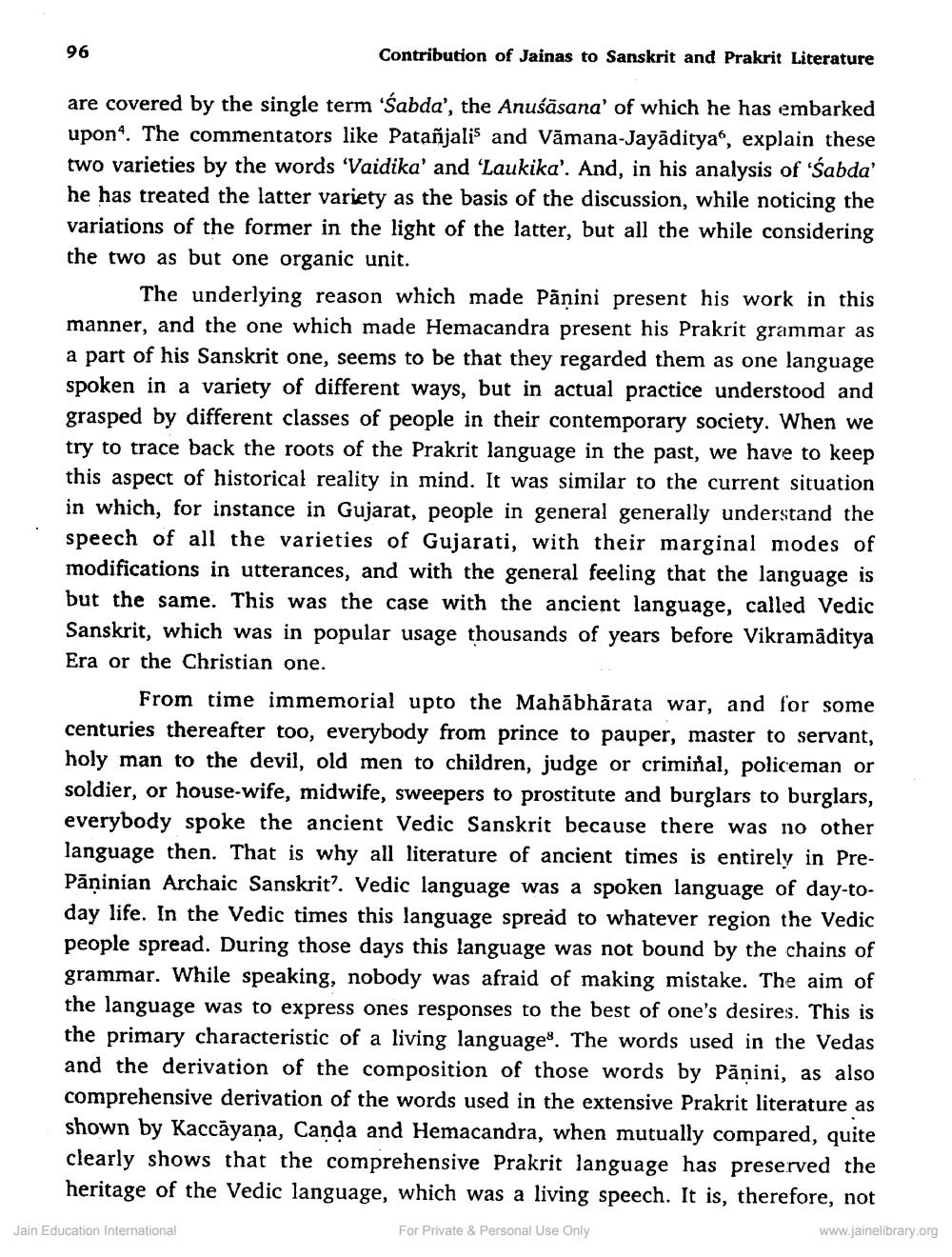________________
96
Contribution of Jainas to Sanskrit and Prakrit Literature
are covered by the single term 'Sabda', the Anušāsana' of which he has embarked upon4 The commentators like Patañjalis and Vămana-Jayāditya", explain these two varieties by the words 'Vaidika' and 'Laukika'. And, in his analysis of 'Sabda' he has treated the latter variety as the basis of the discussion, while noticing the variations of the former in the light of the latter, but all the while considering the two as but one organic unit.
The underlying reason which made Pånini present his work in this manner, and the one which made Hemacandra present his Prakrit grammar as a part of his Sanskrit one, seems to be that they regarded them as one language spoken in a variety of different ways, but in actual practice understood and grasped by different classes of people in their contemporary society. When we try to trace back the roots of the Prakrit language in the past, we have to keep this aspect of historical reality in mind. It was similar to the current situation in which, for instance in Gujarat, people in general generally understand the speech of all the varieties of Gujarati, with their marginal modes of modifications in utterances, and with the general feeling that the language is but the same. This was the case with the ancient language, called Vedic Sanskrit, which was in popular usage thousands of years before Vikramaditya Era or the Christian one.
From time immemorial upto the Mahābhārata war, and for some centuries thereafter too, everybody from prince to pauper, master to servant, holy man to the devil, old men to children, judge or criminal, policeman or soldier, or house-wife, midwife, sweepers to prostitute and burglars to burglars, everybody spoke the ancient Vedic Sanskrit because there was no other language then. That is why all literature of ancient times is entirely in PrePāṇinian Archaic Sanskrit?. Vedic language was a spoken language of day-today life. In the Vedic times this language spread to whatever region the Vedic people spread. During those days this language was not bound by the chains of grammar. While speaking, nobody was afraid of making mistake. The aim of the language was to express ones responses to the best of one's desires. This is the primary characteristic of a living language. The words used in the Vedas and the derivation of the composition of those words by Panini, as also comprehensive derivation of the words used in the extensive Prakrit literature as shown by Kaccāyana, Canda and Hemacandra, when mutually compared, quite clearly shows that the comprehensive Prakrit language has preserved the heritage of the Vedic language, which was a living speech. It is, therefore, not
Jain Education International
For Private & Personal Use Only
www.jainelibrary.org




